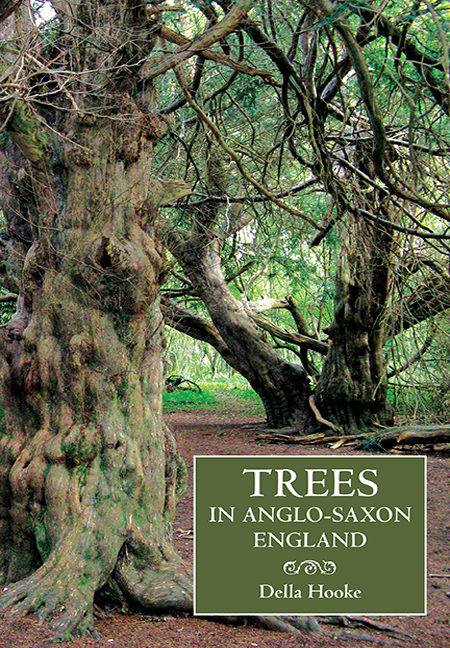Book contents
- Frontmatter
- Contents
- List of Illustrations and Tables
- Preface and Acknowledgements
- List of Abbreviations
- PART I Tree Symbolism
- PART II Trees and Woodland in the Anglo-Saxon Landscape
- PART III Individual Tree Species in Anglo-Saxon England
- Chapter 8 Trees of Wood-Pasture and ‘Ancient Countryside’
- Chapter 9 Trees of Wet Places in Early Medieval Records: Alder and Willow
- Chapter 10 Trees of Open or Planned Countryside
- Chapter 11 Other Trees Noted in Charters and Early Place-Names
- Chapter 12 Trees not Readily Apparent in the Early Medieval Written Record
- Epilogue
- Bibliography
- Index
- Anglo-Saxon Studies
Chapter 12 - Trees not Readily Apparent in the Early Medieval Written Record
from PART III - Individual Tree Species in Anglo-Saxon England
Published online by Cambridge University Press: 09 May 2017
- Frontmatter
- Contents
- List of Illustrations and Tables
- Preface and Acknowledgements
- List of Abbreviations
- PART I Tree Symbolism
- PART II Trees and Woodland in the Anglo-Saxon Landscape
- PART III Individual Tree Species in Anglo-Saxon England
- Chapter 8 Trees of Wood-Pasture and ‘Ancient Countryside’
- Chapter 9 Trees of Wet Places in Early Medieval Records: Alder and Willow
- Chapter 10 Trees of Open or Planned Countryside
- Chapter 11 Other Trees Noted in Charters and Early Place-Names
- Chapter 12 Trees not Readily Apparent in the Early Medieval Written Record
- Epilogue
- Bibliography
- Index
- Anglo-Saxon Studies
Summary
There are no references to pine, fir trees or other conifers in pre-Conquest charters. Certainly this tree appears in Old English literature but not in an English context: it was a pine-tree that St Martin encountered close to a temple ‘protected and accounted very holy in heathen wise’. The Scots Pine, Pinus sylvestris, re-entered Britain after the last Ice age but retreated to Scotland and some mountains of Ireland in the Atlantic period (6200–3800 BC), with only localised stands elsewhere, mainly in the Lake District and the Fens. Both pine and yew colonised raised peat bogs in these areas during prehistoric times (the yew, Taxus baccata, produces berries rather than cones). Spruce (Picea) and silver-fir (Abies) are rarely self-perpetuating in Britain and the spruce is naturally a tree of inland Europe.
There are broad-leaved trees, too, which are missing from the early medieval written records or which appear only in restricted sources such as glossaries referring to translations of Classical literature. The sweet chestnut, Castanea sativa, OE cystbēam,cistenbēam or cystel, is a native of Mediterranean lands which does not germinate freely in Britain. It is not reliably found in the prehistoric pollen record and seems to have been an introduced species which was present by the Roman period. It is absent from the Anglo-Saxon charter and place-name evidence, although it appears in glossaries of the period. The nuts and husks of the sweet chestnut that have been found in a Roman context may represent imported chestnuts but its wood and charcoal have also been found on Roman sites in southern England. Chestnut place-names are medieval recordings at the earliest (beginning in the thirteenth century). However, the tithe of chestnuts granted to Flaxley Abbey at Westbury-on-Severn, Gloucestershire, by Henry II came from a chestnut wood established in a remote location on the eastern margins of the Forest of Dean close to an earlier Roman villa. It is just possible that the tree was an early introduction that survived in this location; a chestnut wood is still found on the spot today. Other ‘quasi-native’ chestnuts are concentrated in south-east England and Essex, although the tree occurs in parks and plantations throughout Britain. The horse chestnut, Aesculus hippocastanum, was a late introduction, brought to Britain from the Balkans in the late sixteenth century.
- Type
- Chapter
- Information
- Trees in Anglo-Saxon EnglandLiterature, Lore and Landscape, pp. 275 - 282Publisher: Boydell & BrewerPrint publication year: 2011



